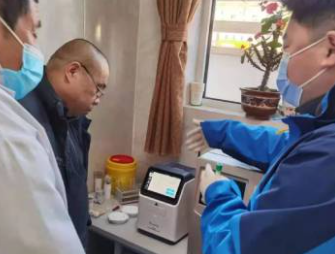release time:2022-06-07 11:43:32
The use of spectroscopy in chemical analysis has led to the development of many new technologies and compounds. One example is the development of biochemistry, which uses spectroscopy to study biological molecules. A biochemistry analyzer is an instrument used to analyze biochemical samples. It helps measure Spectroscopy parameters such as wavelength, intensity, and frequency.
● Micro Spectroscopy
Microspectroscopy is a technique used to measure the small changes in a substance when subjected to an external stimulus. A micro spectrometer, also known as a miniature spectrometer or a scanning probe microscope, can be used to detect and analyze these changes. One of the most critical applications of microspectroscopy is analyzing biomedical molecules, such as proteins and nucleic acids.
● Mass Spectroscopy
Mass spectrometers measure the masses of molecules or ions by ionization and fragmentation. Ionization is the process of splitting an electron from a nucleus, and fragmentation is the breaking down of a molecule into smaller parts. Either collisional or vibrational energy can cause fragmentation. Collisional energy is used to ionize atoms and molecules, while vibrational energy breaks down molecular bonds.
2. Colorimetry
Colorimetry is the measurement of color using an optical technique. Optical methods are more reliable and accurate than other physical methods, such as spectrophotometry. While a spectrophotometer can measure the amount of light absorbed by a substance, optical methods can also determine the color of that substance. An instrument known as a biochemistry analyzer must be used to use visual techniques for colorimetry.
3. Photometry
In astronomy, a significant concern is understanding how stars emit light. One way to measure this is through photometry, which involves measuring the amount of light a star talks. A traditional method for performing photometry is optical techniques, such as using a telescope. However, through Biochemistry analyzers, it is possible to measure photometry much more quickly and accurately than traditional methods.
4. Direct Potentiometry
Direct potentiometry is an electrochemical technique that can measure the concentration of a chemical species. This technique is often used in biochemistry to determine the concentrations of metabolites or enzymes. A biochemistry analyzer is a tool that helps in the accurate and reliable measurement of direct potentiometry.
5. Indirect Potentiometry

2022-03-29
The main purpose of animal testing of medical devices is to study the safety of medical devices. Often the subject of animal testing in medical research may be a new diagnostic method and principle, or the mechanism of action of a new drug, etc.

2022-03-22
ALT and AST are mainly found in the liver within the hepatocytes. They reflect the state of liver function in the body and are elevated when liver cells become necrotic. T

2021-10-18
Semi-automatic biochemical analyzer should be installed on a smooth, fixed, dust-free working platform at room temperature of 15-30℃ and relative humidity <85%. The power supply of the instrument should be used separately. And need to be equipped with UPS uninterruptible power supply and ground, ground is particularly important. In order to ensure the best working condition of the instrument, it is best to warm up the instrument for 10 min before testing the specimen.